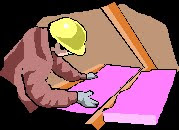
WASHINGTON, D.C. – A diverse group of advisors to Energy Secretary Steven Chu today released a series of consensus-based recommendations calling for increased measurement, public disclosure and a commitment to continuous improvement in the development and environmental management of shale gas, which has rapidly grown to nearly 30 percent of natural gas production in the United States.
Increased transparency and a focus on best practices “benefits all parties in shale gas production: regulators will have more complete and accurate information, industry will achieve more efficient operations and the public will see continuous, measurable, improvement in shale gas activities,” the report says.
The report calls for industry leadership in improving environmental performance, underpinned by strong regulations and rigorous enforcement, evolving to meet the identified challenges.
As shale gas grows and becomes an increasingly important part of our nation’s energy supply, it is crucial to bring a better understanding of the environmental impacts—both current and potential—and ensure that they are properly addressed,” Subcommittee Chairman John Deutch said. “The current output of shale gas and its potential for future growth emphasize the need to assure that this supply is produced in an environmentally sound fashion, and in a way that meets the needs of public trust.”
Better data will help the industry focus its investments, give the public the information it needs to effectively engage, and help regulators identify and address the most important problems,” Deutch continued. “We’re issuing a call for industry action, but we are not leaving it to industry alone.”
The report was prepared by the Secretary of Energy Advisory Board Shale Gas Production Subcommittee. Chaired by Deutch, an MIT professor, it was convened by Secretary of Energy Steven Chu at the direction of President Barack Obama who observed that “recent innovations have given us the opportunity to tap large reserves—perhaps a century’s worth” of shale gas.
The subcommittee was tasked with producing a report on the immediate steps that can be taken to improve the safety and environmental performance of shale gas development. The report reflects three months of deliberations among a diverse group of industry experts, environmental advocates, academics and former state regulators.
The report includes recommendations in four key areas:
1.
Making information about shale gas production operations more accessible to the public
The report calls for the full disclosure of all chemicals used in fracturing fluids. While the committee agrees with the prevailing view that the risk of leakage of fracturing fluids through fractures made in deep shale reserves is remote where there are is large separation from drinking water, the report finds that there is no economic or technical reason to prevent public disclosure of all chemicals used in fracturing fluids.
It also calls for the creation of a national database of all public information made about shale gas. Assembling the data, which are currently dispersed in perhaps a hundred different locations, in a comparable format would permit easier access by all interested parties.
The report recommends government funding support for existing, multi-stakeholder mechanisms such as the non-profit Ground Water Protection Council’s Risk Based Data Management System and the State Review of Oil and Natural Gas Environmental Regulation. Encouraging such multi-stakeholder mechanisms will strengthen regulation and improve efficiency, the report finds.
2.
Immediate and longer-term actions to reduce environmental and safety risks of shale gas operations, with a particular focus on protecting air and water quality
Air Quality:
The report says that measures should be taken to reduce emissions on air pollutants, ozone precursors and methane as quickly as practicable and supports prompt adoption of standards to reduce emissions of all air contaminants.
The subcommittee recommends the design and rapid implementation of measurement systems to collect comprehensive methane and other air emissions data from shale gas operations.
The subcommittee also recommends that a federal interagency planning effort be launched immediately to acquire data and analyze the overall greenhouse gas footprint of shale gas operations throughout the lifecycle of natural gas use in comparison to other fuels.
Water Quality:
The report urges the adoption of a systemic approach to water management based on consistent measurement and public disclosure. Companies should measure and publicly report the composition of water stocks and flow throughout the process; manifest all transfers of water among different locations; and makes recommendations about best practices in well development and construction, especially casing and cementing. Likewise, agencies should review and modernize their rules to ensure they are fully protective of both groundwater and surface water.
The findings also recommend additional field studies on methane leakage from hydrofractured wells to water reservoirs and the adoption of requirements for background water quality measurements to record existing methane levels in nearby water wells prior to drilling.
3.
Creation of a Shale Gas Industry Operation organization committed to continuous improvement of best operating practices
A more systemic approach by the shale gas industry based on best practices—recognized as improvements to techniques and methods over time based on measurement and field experience—is an important way to achieve better operational and environmental outcomes, the report finds.
The report envisions the creation of a national organization, with external stakeholders, dedicated to continuous improvement of best practice through the development and diffusion of standards and the assessment of member compliance. The organization would likely work through regional subgroups.
4.
Research and development (R&D) to improve safety and environmental performance
The report finds that, while the majority of shale gas R&D will be performed by the oil and gas industry, there is a role for the federal government.
“We are mindful of the nation’s financial constraints,” Deutch said. “But we do see a key role that can be played by modest government support for R&D around environmental questions.”
The report recommends that the administration set an appropriate mission for shale gas R&D and level funding, with a particular focus on efficiency of water use and other improvements to enhance environmental objectives.
The subcommittee report is available at:
shalegas.energy.gov Pinellas Energy Efficiency Project
Pinellas Energy Efficiency Project











